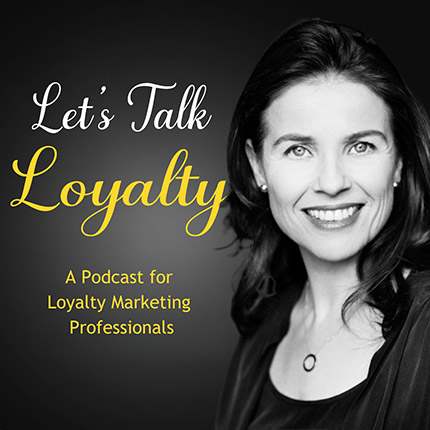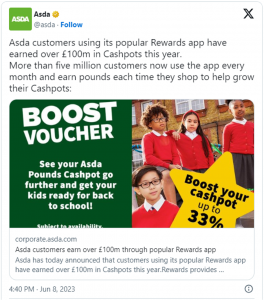72 years is a long time to collect a lot of shopper data, and ASDA’s new management (post-Walmart) wasn’t going to let that advantage slip away.
With that starting point, Matt McLellan and his team set out to create a program to leverage the true power of the data. The goal was to drive the business forward – not just with better decisions and more sales, but also stronger, longer customer relationships.
Baby steps helped take the challenge head-on
The UK is probably the most intensely competitive grocery market in the world. ASDA’s challenge was to stand out in a crowded, noisy loyalty market where they were the last to join the party.
They turned their late entry into an advantage. Starting with a clean slate, unencumbered by legacy technology, teams, mindsets, or unused points balances, the team asked themselves:
- How do we create a modern, commercially sustainable program with a value proposition that works for shoppers, suppliers, and the business?
- How do we ladder outcomes up into the P&L?
They finally chose a customer-centric approach focused on engagement rather than points. But they also chose an iterative approach that was all about testing, piloting, learning, and scaling.
It all began with an MVP
The launch MVP was trialed in 16 stores for about three months, and was an ‘in-store only’ proposition run through a functional app.
Every iteration thereon helped layer in new elements and scale to the next ‘groups of stores’. At each stage, they collected more feedback and fine-tuned the value proposition. That went on for another nine months.
It was September 2022 by the time the program went live in all 650+ stores.
The phased launch gave them confidence in the business case, galvanized the internal stakeholders, and helped tweak the proposition in response to staff and customer feedback.
Yes, the words matter
The ASDA rewards program is also a great example of back-to-basics copywriting. Program terminology such as ‘Pounds’ (not points), ‘cash pot’, and ‘missions’ seem simple but have been carefully chosen based on their simplicity, tangibility, and ease of communication.
Beyond the words, the entire program design is based on genuine consumer insights.
Here is what they heard.
- People don’t want the complex math of converting points to rewards.
- They want tangible and concrete benefits they can easily visualize.
- They want the flexibility and control of choosing how to redeem their rewards.
- They want to have more fun with shopping
Standing out in a crowded market
Two unique elements differentiate the ASDA program.
The cash pot
Pounds (not points) earned by customers sit in a ‘cash pot’ which they can draw on whenever they want or save for moments that matter, like Christmas, birthdays, or back to school. The ‘cash pot’ may be virtual but it has a very concrete appeal. Customers feel satisfied when they see their cash pot balance increasing by a monetary amount.
Missions to make shopping fun again
Shopping missions drive shopper engagement. For instance, a shopper can buy five fruits and vegetables in a two-week period and get 50 P into their cash pot. Or they could receive 5 pounds in their cash pot to shop at George (ASDA’s fashion brand) during a sale.
These missions are designed to be gamified so shopping trips and customer experiences are more fun, but also to be inherent to shopper behavior, i.e. not requiring extreme changes in regular shopping behavior.
Measuring success
A year in, they have seen a meaningful impact on both – sales and market share. Program members show higher shopper frequency and improved stickiness and retention than non-members.
In June 2023, around 4 million members had earned over £100 million in their cash pots!
I can almost see that pot bursting at the seams!
Hear the full episode with Matt McLellan Vice President – Customer Planning and Proposition, ASDA here
👉 Am I missing anything? Share your ASDA loyalty story with us below
👉Want more such insights from the world’s best loyalty programs each Monday? Sign up for Monday Moments here or share with a colleague to earn your Monday karma!



